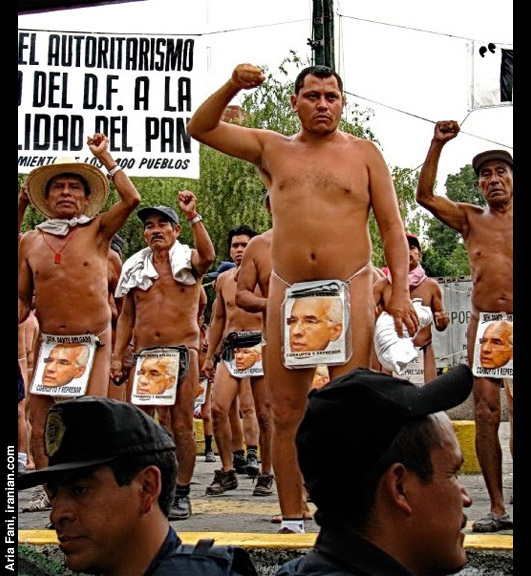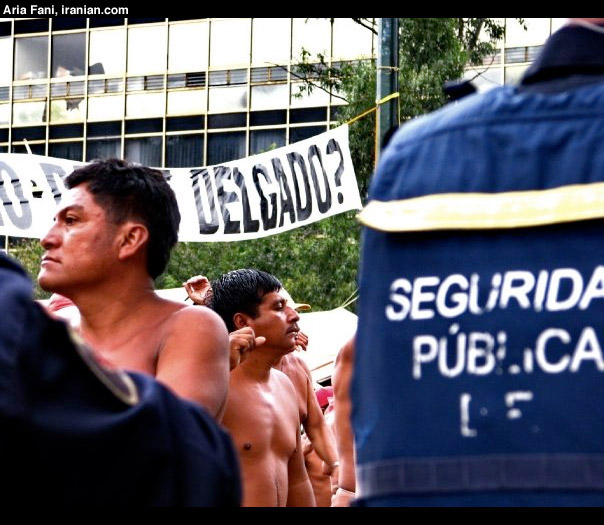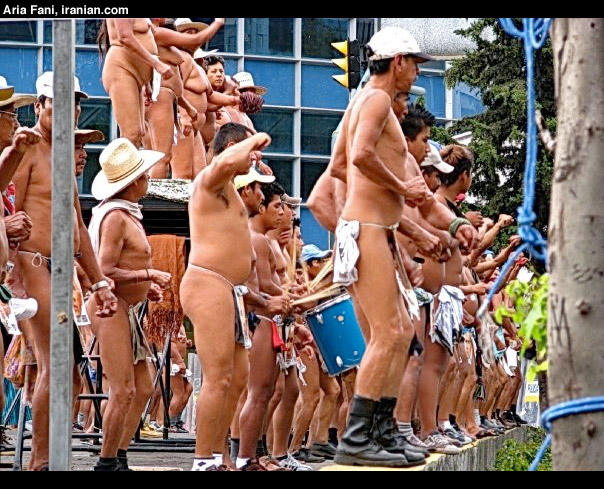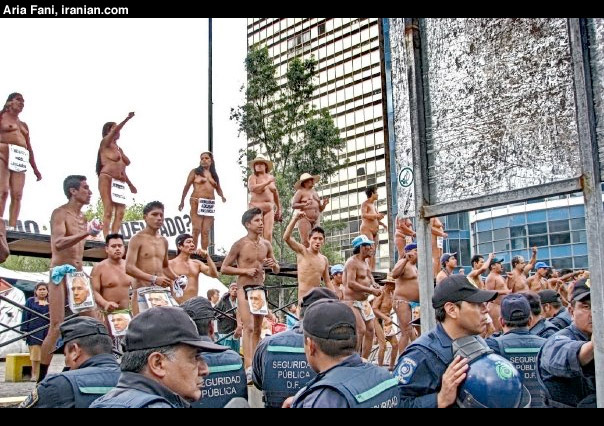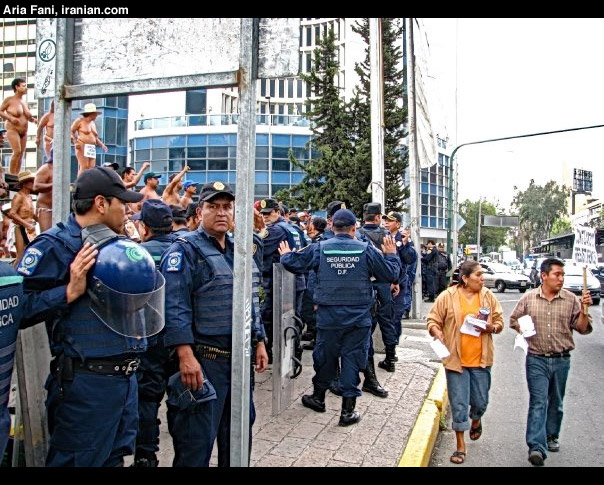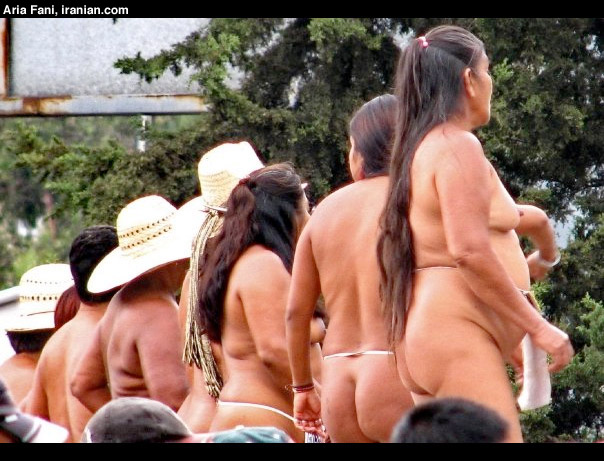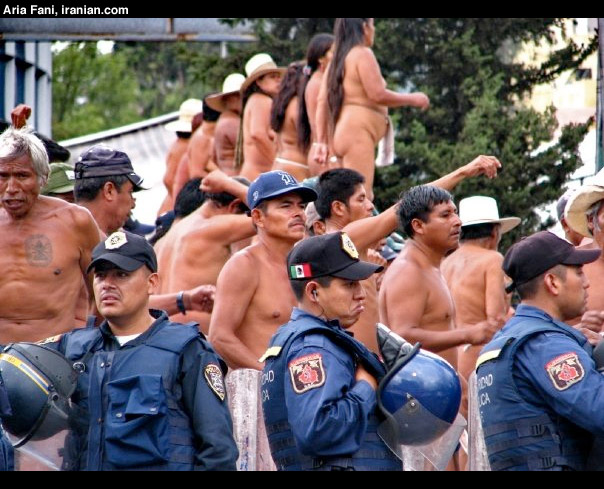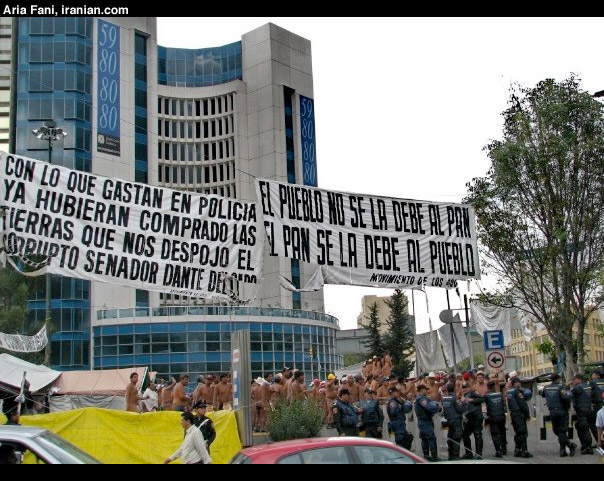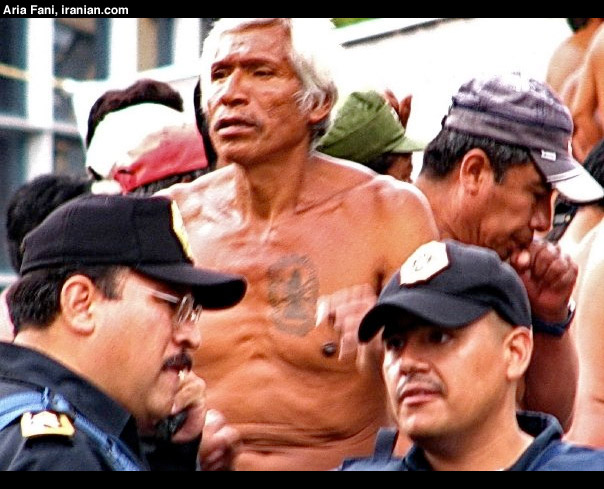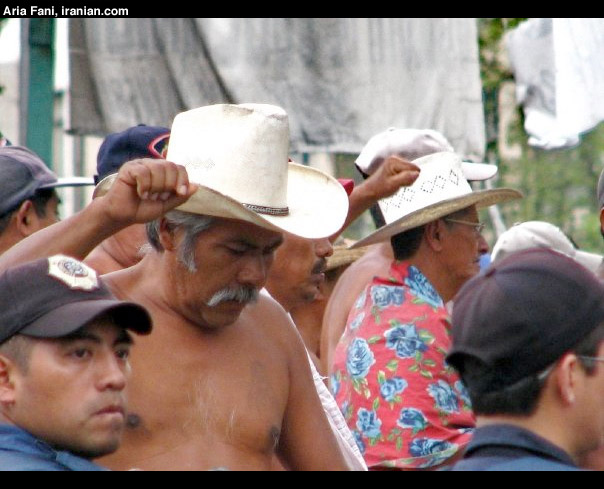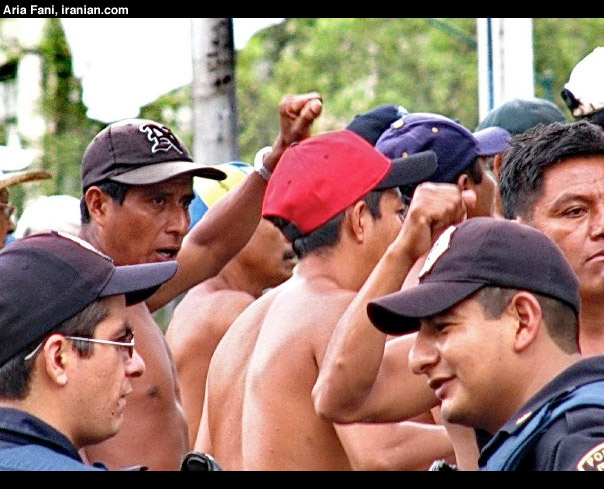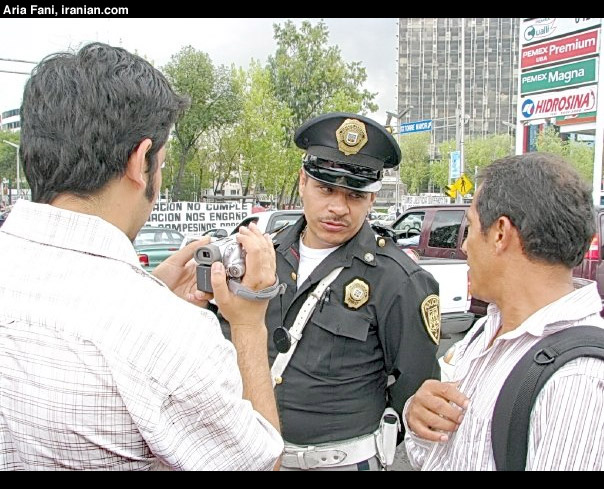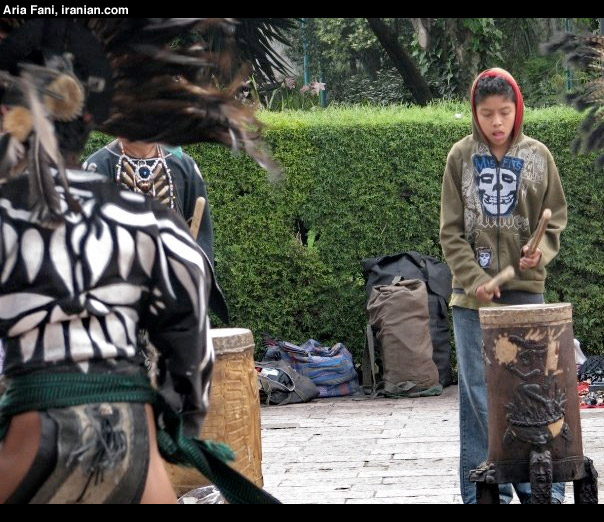
— “In Montes Azules, one of the world’s most bio-diverse areas, displacement [forced removal of Mayan Peoples] is carried out under the guise of environmental conservation.”
— “Various sources report that the indigenous children from the Mexican states of Oaxaca, Chiapas, Guerrero and Mexico state have been prostituted by international mafias.”
July of 2008, I embarked on a wonderful journey to Mexico City with David Guerrero Cruz, a native of Mexico. Upon my arrival in Mexico City, we observed many protests organized by marginalized communities of indigenous Mexicans. One particular case was an indigenous tribe from Chiapas who had been protesting on a public square, in front of a government building in Mexico. Their lands had been confiscated by Senator Dante Delgado. Faces, voices, words that were all lost, belonged to people who had struggled with poverty as long as they can remember. The atmosphere was so poignant that I could only photograph, speechless and weeping.
They had been protesting for months in the capital city, where there was a shortage of food and drinking water. Nevertheless they were well-aware that if they chose to return to Chiapas, all would be lost. In order to overturn laws set by the government, tribes have had to protest for years! A few spoke Spanish in the tribe, and they were communicating with people for financial support. Police had a strong presence to control the protest, a protest that ironically involved only indigenous dancing!
The indigenous oppression in Mexico— and Americas—has a deep root, going back to the time the Spanish invaders set foot in Mexico. In 1519 AD, Hernan Cortes and his armies dropped anchor off the coast of Veracruz, beginning an historical process that culminated in the conquest of the Mexican Empire. The Spaniards were seen by indigenous Mexicans as light-skinned men who brought strange animals (horses) and powerful weapons. The indigenous Mexicans and their governor Montezuma Xocoyotzin were mystified about the Spaniards’ presence.
Cortes benefited from Montezuma’s hesitancy and made alliance with their enemies of Mexica. Nonetheless Montezuma received Cortez in peace and housed him in the city. Shortly afterwards Montezuma was taken prisoner and forced to swear allegiance to the King of Spain, Charles I. The Spaniards carried out a massacre, which led to the indigenous uprising. Montezuma was killed by Cortez when the Mexica fiercely surrounded him. Ultimately Tenochtitlan was conquered with great violence by the Spaniards and their superior weaponry.
1519 AD marks the beginning of an unending oppression suffered by the indigenous people, hitherto. The Spaniards did not only occupy lands, but forced their culture, language, and religion on the indigenous Mexicans as well. They held no regard or respect for the values and rituals of indigenous tribes. They saw them as naïve, impious, superstitious, and primitive people who needed to be disciplined. They destroyed as much of the indigenous history and culture as they could. The invaders abolished the great civilizations of the Aztecs, Zapotecs, and Mayas. Invaders built churches on top of the Aztec pyramids—the main cathedral in Mexico City stands on an ancient city thousands of years older than itself. Radical Christians brought their merciless “God” and faith to them—the Mexican Inquisition was an extension of the Spanish Inquisition which brought into the New World in 1571 which lasted till 1820; with the number of victims unknown!
Today, the Indigenous oppression has yet to be monitored or put under control. Indigenous Mexicans of Otomí, Mixtec, Zapotec, Catúa, Mayo, Purépecha, Mono, Comanche, Náhuatl, Yaki, Chipúa, Orepago, Keetowah, Paiute, Chumasa, Hochuak, Navajo, and Apache tribes are hit by displacement, removal, prostitution, and poverty at the expense of the Mexican government and other mafias. The Indigenous are blamed for their lack of development. Such stereotypes and expressions are appallingly akin to the treatment of third-world countries by the industrialized nations. “Mexicans are lazy,” “They are illiterate, because they have too many children,” have become common expressions attached to the identity of the indigenous. Such expressions simply derive from the lack of observation and understanding. One merely needs to visit their farms, observe the stunning art works, handicrafts, and literature that they produce to refute all the stereotypes. Those who label the indigenous as “lazy” and highlight their historic “lack of development” may want to take the economic and social inequalities they face on a daily basis into consideration.
To conclude, the Mexican government fears the uprising of the all indigenous tribes and marginalized communities. They have confined their culture to wearing traditional clothing and performing traditional dancing. In all Americas, they treat indigenous tribes as Barbarians, with no respect. They are “Barbarians” simply because they refuse to take part in the history written by the industrialized countries. They seek to define themselves outside the capitalist world. Is that shameful?
Who are the “Barbarians”?
* Title inspired by J. M. Coetzee’s novel
* Aria Fani is on the Editorial Board of Peyk. 12 next › last » 